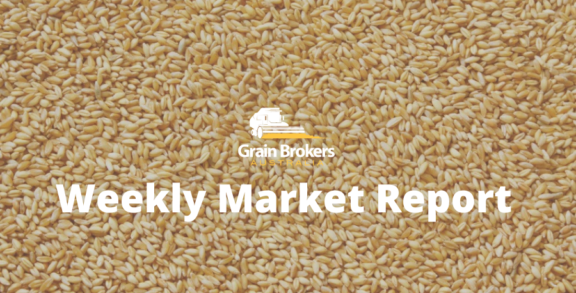
Low barely supplies sees users scrambling
Grain Brokers Australia > Weekly Wire
by Peter McMeekin
Wheat, corn and soybean production numbers stole the limelight when the US Department of Agriculture released their latest World Agricultural Supply and Demand (WADSE) estimates on August 10.
Meanwhile, barley chugs along, running its own race, with potential global supply and demand issues seemingly flying under the radar. The USDA dartboard has come up with 2018-19 global production at 144.4 million tonnes. This is unchanged year-on-year but down 3mt and 5mt on the 2016-17 and 2015-16 seasons respectively.
Like wheat, there are certainly some discrepancies between the USDA numbers and estimates emanating from the major producing countries themselves. EU production, for example, was placed at 59.2mt by the USDA but many European based traders fear the crop will struggle to get any higher than 57mt.
The scariest part of the domestic (barley) story is that we are still in winter and many parts of the east coast are already a write-off.– Peter McMeekin, Grain Brokers Australia
Moving east to Ukraine, the local industry estimates suggest the crop will be 7.5mt at the most. That compares to the USDA projection of 8mt, both of which are lower than last season at 8.7mt. The production decline in Russia is even more dramatic with the current harvest expected to come in at a four-year low of 17mt. This represents a 16 per cent decline on the 2017-18 crop of 20.2MMT.
Canada is the only major producer where the USDA expects to see an increase in production. This is on the back of a 10 per cent increase in plantings. However, the end of season weather has not been kind to the maturing crop and reports from local Canadian crop scouts suggest that production will be more in line with last year’s number of 7.9mt, rather than the recent USDA projection of 8.8mt.
The two major barley producers south of the equator are facing quite differing scenarios. Increased plantings in Argentina are expected to yield around 4mt, compared to 3.7mt last year. While here in Australia we have a tale of two opposites; unseasonably dry and hot on the east coast, with production declining, and ideal conditions on the west coast, with production increasing at a rapid rate.
Seasons such as this make it extremely difficult to forecast production. There are so many unknowns. How many hectares have had livestock turned onto them and will not be harvested? What area gets cut for fodder when the drought market is pushing hay prices higher and higher? How many hectares were sown dry and simply didn’t emerge due to lack of rain?
There is rarely consensus among the trade and industry organisations when it comes to estimating Australian production. I have heard barley production estimates approaching 9mt and as low as 7mt in recent weeks. Personally, I struggle to get above 8mt, with any decreases on the east coast currently being replaced by increased production in the west.
The scariest part of the domestic story is that we are still in winter and many parts of the east coast are already a write-off. As we know it is the spring that makes or breaks the Aussie crop. The most recent Bureau of Meteorology doesn’t provide any joy either, with both September and October likely to be drier than average across a majority of winter crop regions, including Western Australia.
While the USDA did decrease barley demand by 325,000mt to 145.6mt compared to their July report, it will still outstrip global production for the third consecutive year. It is down 2.5mt year-on-year, predominantly due to lower supply. The stocks to use ratio is now sitting at 12.5pc, compared to a far more comfortable 18pc only three years ago. More global rationing will be inevitable, but this is actually quite difficult when such a large proportion of world demand is quite inelastic.
Saudi Arabia is the world’s largest importer of barley. The Saudi Grains Organisation (SAGO), which has exclusive buying rights for feed barley into the kingdom, has issued two barley import tenders this season. They have bought 3.24mt, for arrival in the July to October period, which is around 250,000mt ahead of the same period in 2016-17. Despite the increased imports of corn, dried distillers’ grains (DDG’s) and other substitutes, total barley imports last season were 8mt and they are expected to remain the same in 2018-19. This will take out a substantial proportion of the Black Sea supply.
In the EU, the maltsters are facing some tough decisions due to low malting barley selection rates, predominantly a consequence of high protein. They either alter their specifications to alleviate all, or some, of the problems or they will be forced to import. But where will the imports be sourced? The Russian and Ukraine quality is too poor (and it is all going to Saudi Arabia as feed). Certainly not Australia, as any exportable surplus here (feed and malting) will go into China, Japan and other Asian consumers. That leaves Canada and Argentina as the likely candidates.
This scenario is one that will not be lost on the Australian maltsters and brewers, particularly on the east coast. We are already seeing a steady stream of coastal feed barley shipments from WA to Brisbane and Newcastle. No doubt a large proportion of the Queensland and NSW malting barley requirements will be forced to make the same journey.






